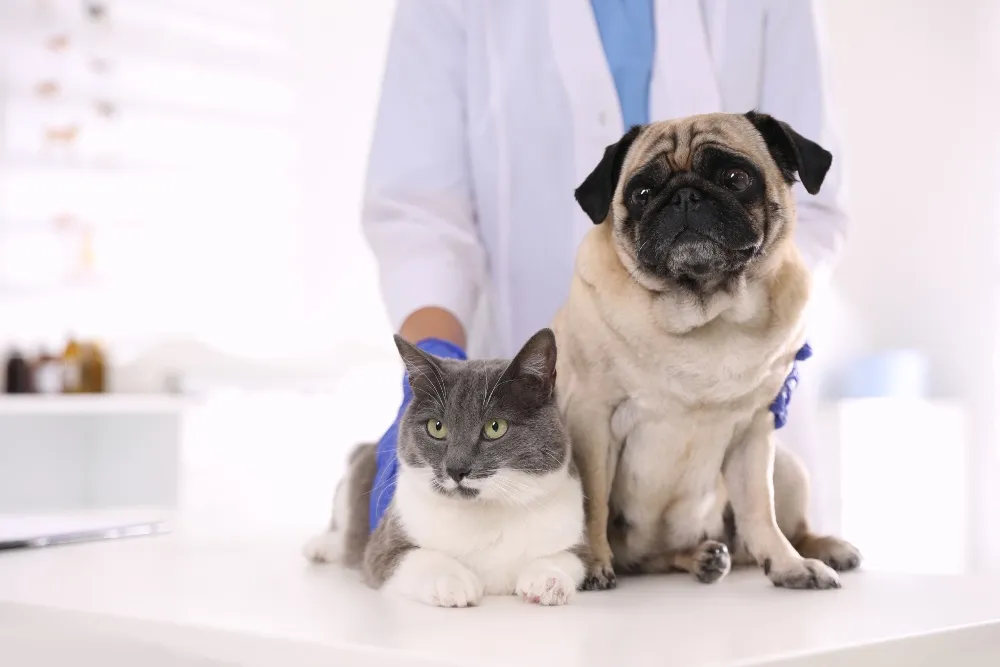Table of Contents
We get it, insurance policies are like many contracts that are often written with specialized terms, and pet insurance is no exception. In this article, we explain some of the insurance terms that will most commonly appear throughout your pet insurance research, along with some frequently asked questions.
Premium
This is the amount of money you pay, often on a monthly pay plan, for your pet’s insurance policy. Other costs for insurance, like a one-time administrative fee, are not considered a part of your premium. Your pet’s premium is based on several factors including their breed, age, and location, as well as the deductible and reimbursement rate you choose at enrollment.
Reimbursement
You’ll see this word frequently when it comes to pet insurance. Many pet insurance plans are written to require the pet parent to pay for their veterinary bill up front and then get reimbursed from their pet insurance plan. Your reimbursement is the amount your pet insurance provider will repay you for your veterinary bill. This is commonly delivered via a paper check in the mail or a direct deposit to your bank account.
Deductible
Your deductible, typically selected from multiple options when you first sign up for insurance, is the amount you will be responsible for paying before your insurance begins reimbursing you. In the pet insurance world, depending on the plan you choose, your deductible may be applied annually (once per year), or once per condition. With a Healthy Paws plan, your deductible is applied annually, and resets on the anniversary of the date you enrolled your pet.
Which deductible should I choose?
Deductible options will vary by plan and may also vary based on other factors such as your location or your pet’s age. Healthy Paws plans often offer multiple annual deductible options to choose from when enrolling your pet, such as $250 or $500.
The deductible amount you choose will depend on your personal situation and preferences. A higher deductible means you’ll pay a lower monthly premium and vice versa. Some pet parents prefer a low deductible while paying more on their monthly premium in order to maximize the amount reimbursed for their claims, whereas others would rather pay less for their monthly premium.
How does the deductible work?
When Healthy Paws processes your first covered claim of that pet’s policy year*, we take your claim (the total sum of covered items on your vet bill), then factor in your selected reimbursement rate to reach a subtotal. Then the annual deductible is applied.
If the subtotal is less than your deductible, then the amount will be applied towards your deductible, and the remainder of the deductible will be applied to your next covered claim until the deductible has been satisfied (reaches $0 remaining) for that policy year.
If the subtotal is higher than your deductible, then the deductible will be subtracted, and the remainder of your covered costs will be reimbursed to you.
*The policy year starts over each year on the anniversary of the date you enrolled your pet.
Co-insurance/Co-pay
Pet insurance typically does not cover 100% of a claim; it will cover a majority of the cost, and the pet parent is responsible for the remainder. The co-insurance or co-pay (often used interchangeably) is the percentage of the claim the pet parent is responsible for paying even after the deductible has been met.
What co-insurance options are available?
Reimbursement rate options will vary depending on the pet insurance plan you choose. With Healthy Paws, plan options vary from 50-80%. This means your plan will pay for 50-80% of your eligible veterinary costs (after the deductible), and your responsibility (your co-insurance/co-pay) is the remainder.
How does co-insurance work?
Your co-insurance rate will be applied to any claims (eligible veterinary expenses) you file. After your deductible has been met, you will receive reimbursement for eligible claims. Let’s say your deductible has already been met and you have a claim for $100 with an 80% reimbursement rate. That means the insurance company will repay you $80 for the claim, while the other $20 is your co-insurance/co-pay, or your responsibility.
Limits/Caps
Limits or caps are the maximum dollar amount an insurance provider will pay for covered costs. These will vary by provider and plan. When researching pet insurance, you will find a range of payout limits; some are per year, per claim, per illness/injury, or lifetime policy limits.
The Healthy Paws plan does not have any monetary limits or caps on claim payouts.
If you still have unanswered questions, be sure to check out our FAQ page, or reach out to our customer care team. We’re here to help!







